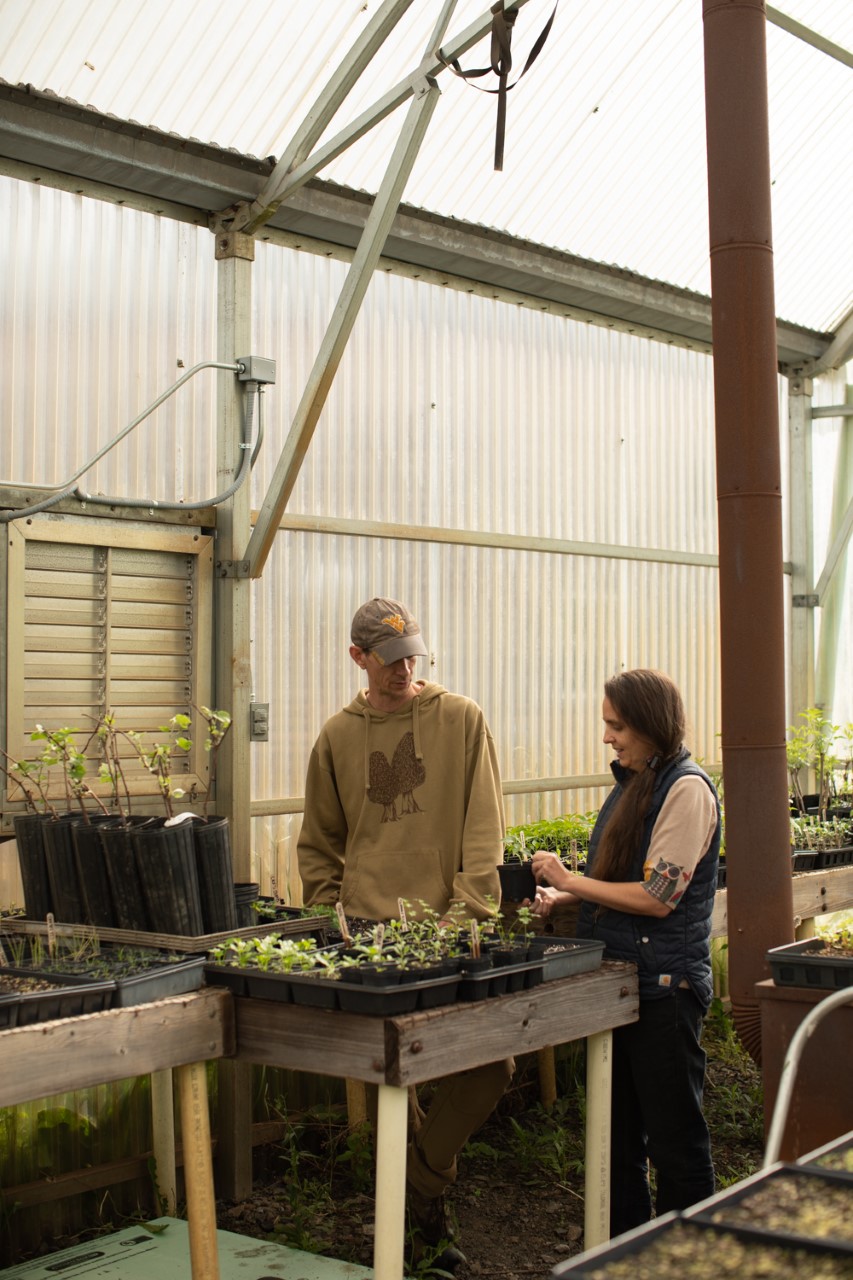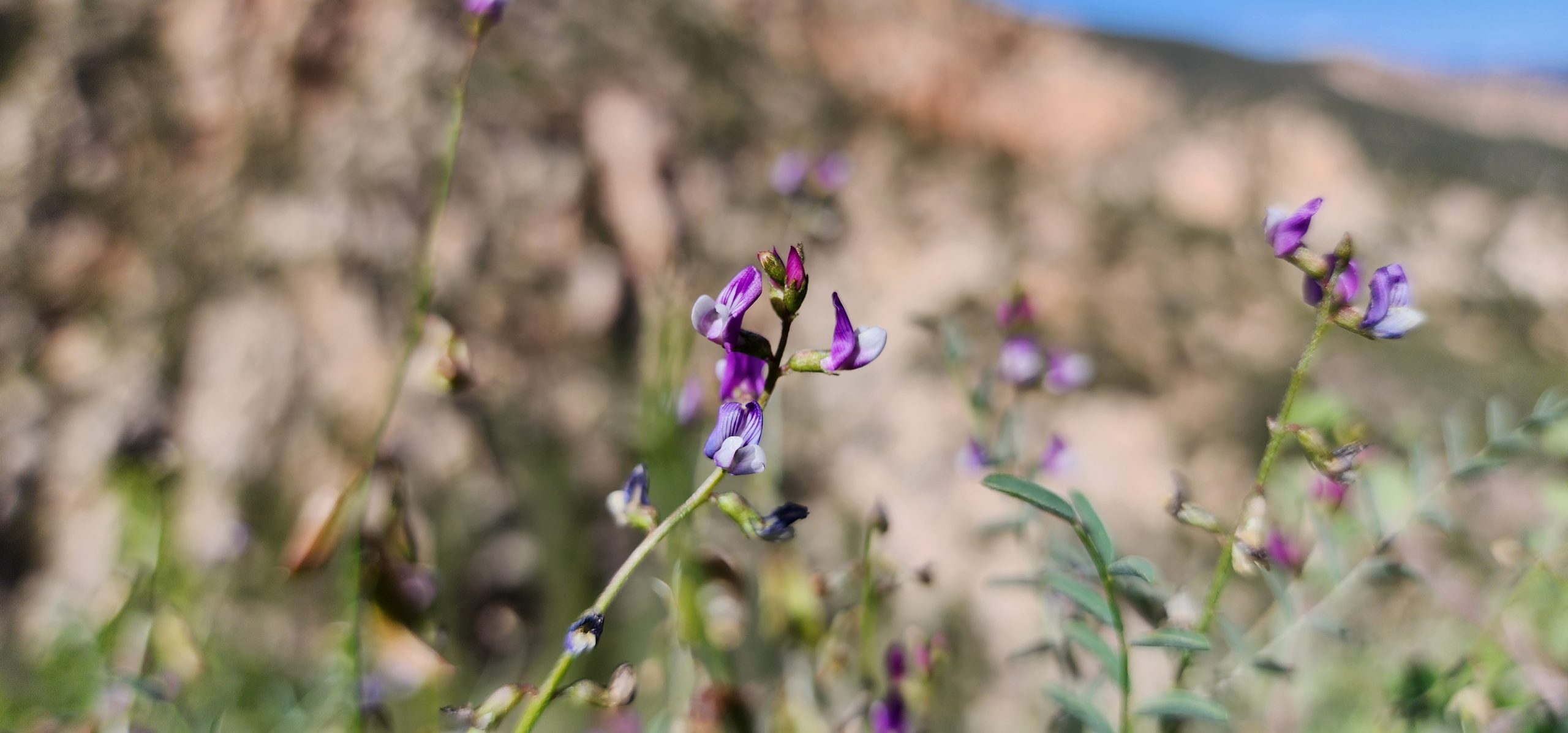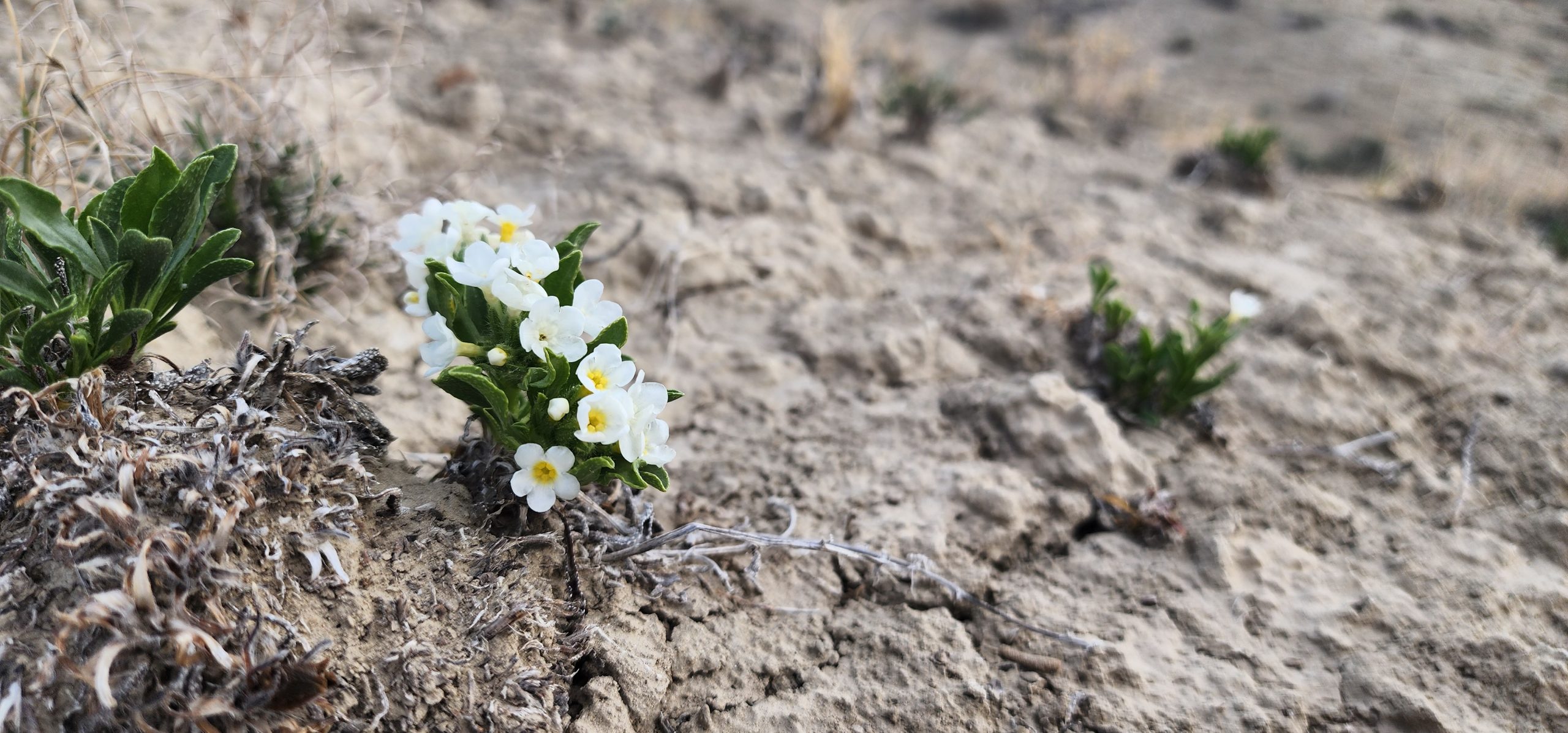Save Plants
CENTER FOR PLANT CONSERVATION
March 2022 Newsletter
In this issue of Save Plants, we launch our exciting new CPC Conservation Partner categories. Options for individuals include Plant Conservation Professional Partner, Emerging Professional Partner, and Student. Opportunities for institutions include Participating Institution, Collaborating Partner, and Network Partner. These new categories were designed to increase our community of professionals, adding valuable contributors to our important work of conserving endangered plants and advancing plant conservation science. It is a treat to hear from Students and Emerging Professional Partners, like our Conservation Champion, Alexandra Seglias, about how early opportunities have shaped careers. We also welcome three new Institutional Conservation Partners, whose breadth of knowledge and fresh perspectives enrich CPC. We are thrilled to grow our brain trust with individuals and institutions dedicated to and passionate about plant conservation. Learn more about becoming a CPC Conservation Partner here.
We wish you all a happy spring and hope to see you in Denver at our National Meeting in May!
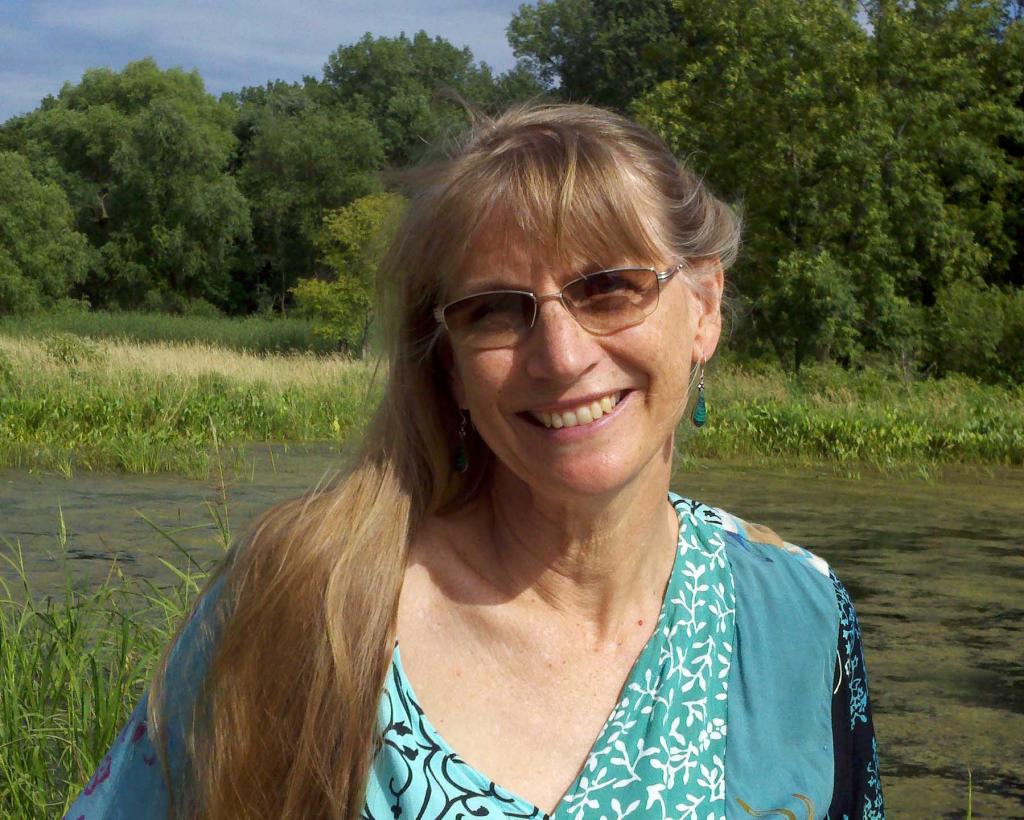
Joyce Maschinski
CPC President & CEORare Care Internship Helps Student Bloom
In the spring of 2018, Maya Kahn-Abrams made her annual trip to the Umtanum Creek Recreation Site in eastern Washington, an area she has loved since she moved to Washington. On this trip, she noticed that some of the native rose bushes were being impacted by a fungal infection. This observation affected Maya profoundly. She had a background in environmental microbiology and regenerative agriculture, but the infected roses made her realize she needed to be doing more for the Washington native species she had come to love. The trip left her wanting to do something — but she didn’t know what that something might be. It wasn’t until several months later, when Maya came across an announcement for a Rare Care internship through the University of Washington Botanic Gardens, that a career path began to take shape.
“Working with Rare Care has given me a sense of purpose in my life,” Maya states with conviction. She had been hoping to unite various interests in her undergraduate career in the pursuit of a common goal. This goal came into focus when she saw the possibilities of working with rare plants and conducting research to inform their management and restoration.
In 2019, the Rare Care program was taking on interns as part of a project with the National Park Service to establish long-term monitoring plots for alpine plants. Maya had a science background and various outdoor experiences in Washington and in the tropics, but she lacked field ecology experience and a sense of how to apply her skills to rare plants. Viewing the internship as a golden opportunity, Maya applied and eagerly accepted a position. Before beginning her internship, Maya began gaining experience in native plants through an independent study course focused on native plant taxonomy and ecology in her last quarter. Her new ties to the UW Botanical Gardens also gave her the opportunity to take part in a restoration project with Rare Care at Turnbull Wildlife Refuge with Spalding’s catchfly (Silene spaldingii) as part of the course.

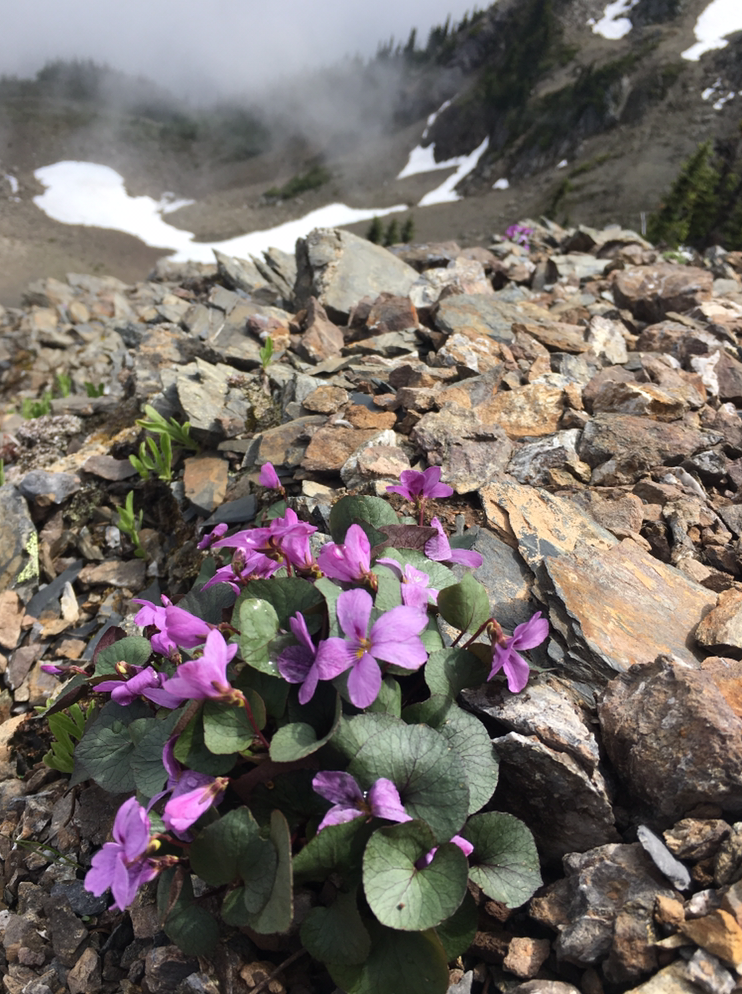
During the summer of her internship, Maya gained new skills and got to know some incredible alpine plants. She worked with fellow intern Callie Zender and under the tutelage of Wendy Gibble, Rare Care Program Manager. Wendy recalls that, “Right from the start, Maya demonstrated an incredible passion for learning about plants and how they interact with surrounding species and the environment.” Maya quickly absorbed new skills — preparing for field work, techniques for monitoring plants, and interpreting the data — as well as a familiarity with the challenges facing rare plants and rare plant restoration efforts. These skills were the missing pieces that enabled her to link her previous experiences to her desire to help native plants.
Even in a brief Zoom call, Maya’s passion for rare plants shines through. Wendy shared that “Early career interns bring fresh ideas and infectious enthusiasm to the Rare Care Program, that can lead to new discoveries and innovative ideas that expand our tool kit for plant conservation.” In Maya’s case, she carried her ideas and enthusiasm on into her next endeavors.
Following the internship, Maya continued to work with Rare Care, shifting between volunteer and staff according to availability and need. As she contemplated graduate school options, she heard an inspiring talk given by Professor Jonathan Bakker (University of Washington) to the Washington Native Plant Society. She later found him on the list of advisors for a master’s project working with Rare Care on sagebrush-steppe restoration – a perfect match for her interests. This tie-in allows Maya to continue her relationship to the UW Botanic Gardens and Rare Care, the group that helped her find her purpose.
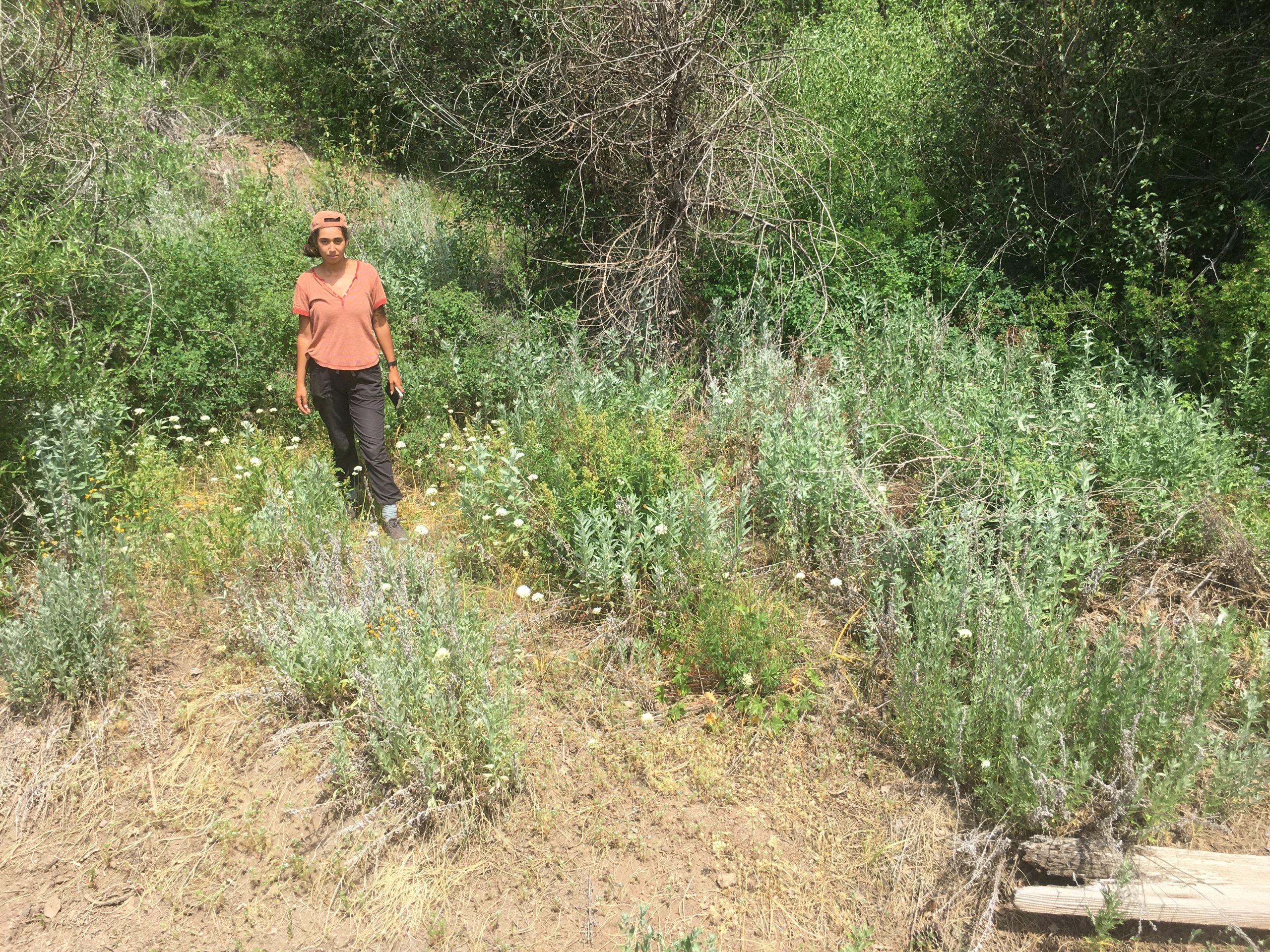
For her master’s thesis, Maya is studying Umtanum Desert buckwheat (Eriogonum codium), a Washington state endemic found only on Hanford Reach National Monument. Rare Care is working with researchers and land management partners to simultaneously learn more about the plant’s life history and keep it from the brink of extinction through outplantings. The Umtanum Desert buckwheat, like several other buckwheat species, seems to be found only on a specific soil type. Understanding this relationship may help the survival of outplanted seedlings. Maya is examining if this rare buckwheat is indeed a soil endemic, and what soil characteristics allow it to flourish there.
-
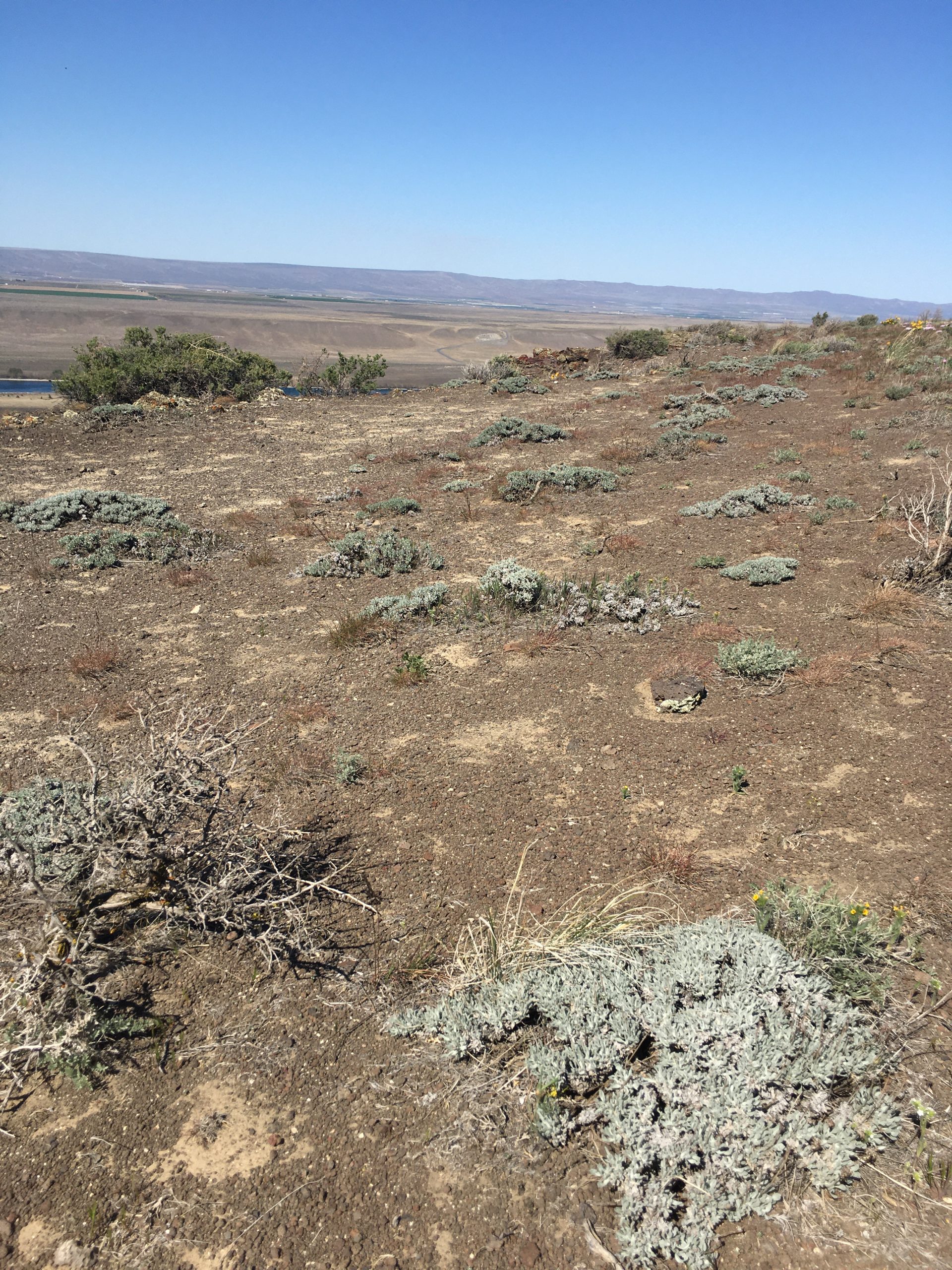
Some of the plants comprising Umtanum Desert wild buckwheat's (Eriogonum codium) single population. Understanding the difference in soil of this 1.9 sq mile in Benton Co, Washington and the attempted enhancement sites is part of Maya's master's thesis. Photo credit: Maya Kahn-Abrams -
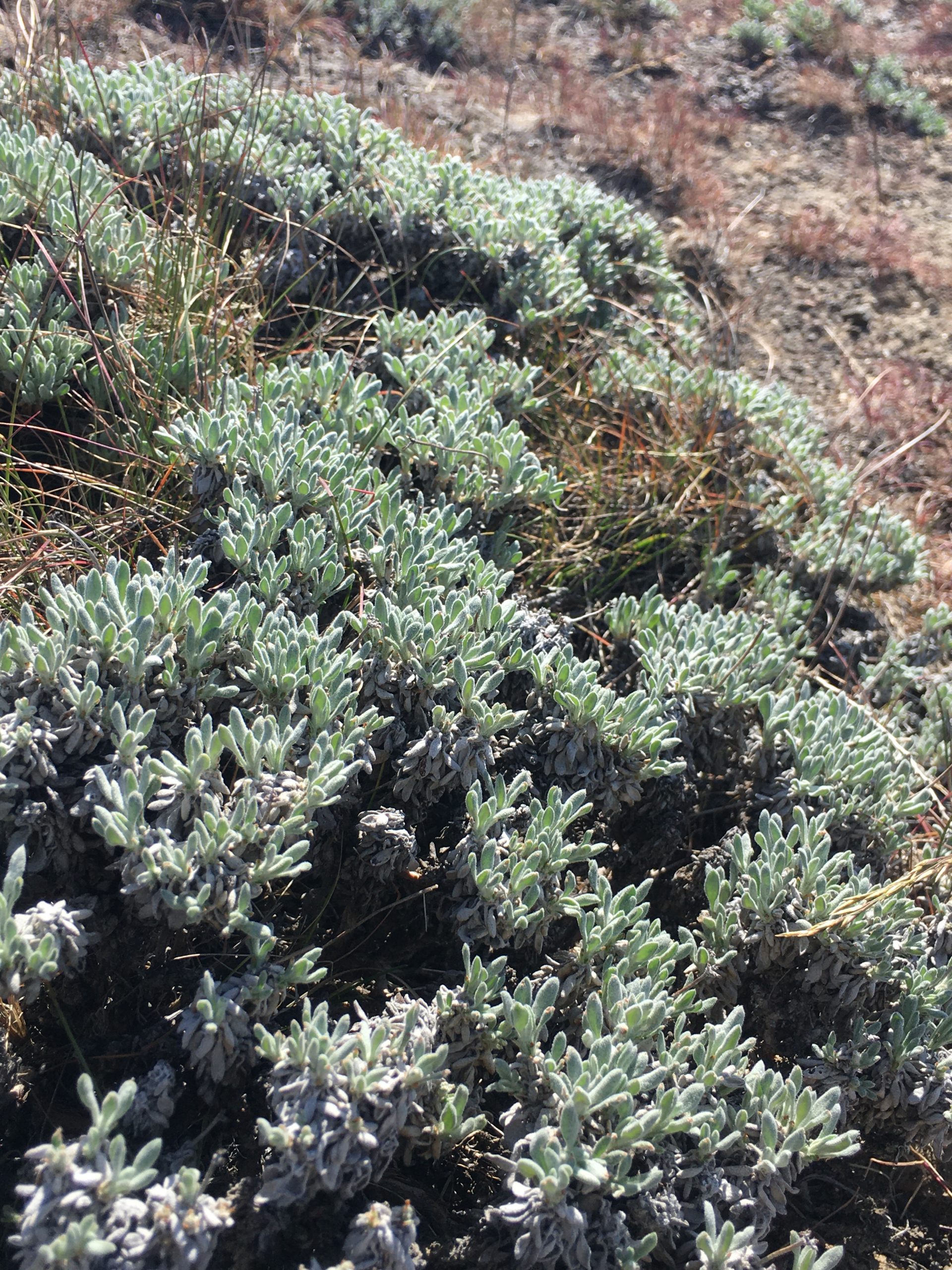
Some of the plants comprising Umtanum Desert wild buckwheat's (Eriogonum codium) single population. Understanding the difference in soil of this 1.9 sq mile in Benton Co, Washington and the attempted enhancement sites is part of Maya's master's thesis. Photo credit: Maya Kahn-Abrams -

Hoover’s Desert Parsley (Lomatium tuberosum) in Yakima Co., WA. Photo credit: Maya Kahn-Abrams 2021
Maya’s work comparing the natural site to failed outplanting sites and proposed outplanting sites ties her undergraduate background in microbiology and biogeochemical cycling to her more recently developed field skills and interests in restoration and soil science. She has found meaning in her career path because she took a chance on something new — applying to an internship to work with rare plants when she didn’t even know that jobs were available in this field.
“Providing learning and training opportunities for the next generation of botanists is really important to us here at UW Botanic Gardens,” notes Wendy Gibble. With success stories like Maya’s, it is easy to see why the Gardens’ program values them so highly.
-

Maya visits the Umtanum Creek Recreation Site, Kittitas Co, WA, annually, and the area nurtured her love for Washington native plants before she joined Rare Care. Photo Credit Maya Kahn-Abrams 2019 -
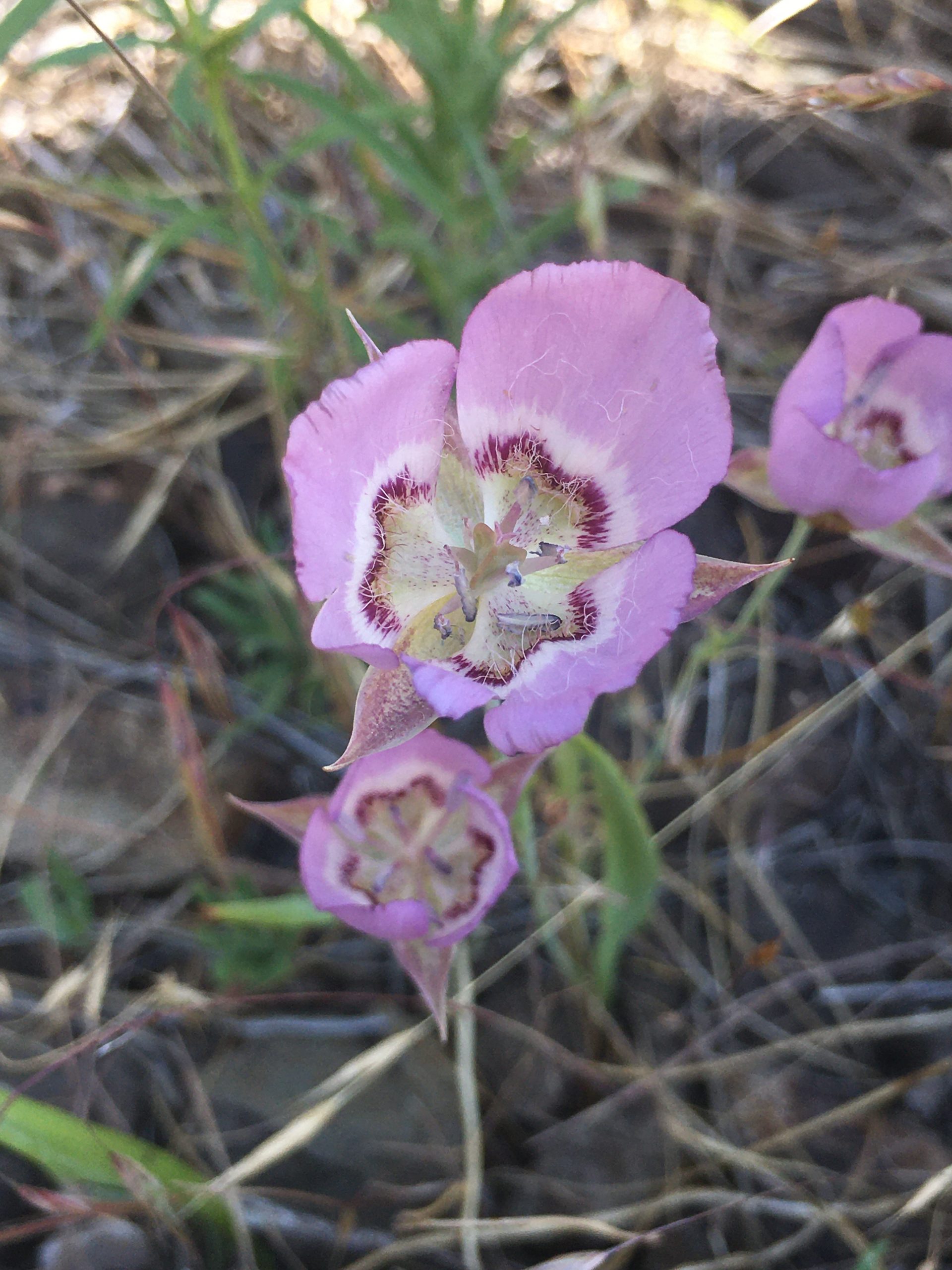
Monitoring Long Haired Star Tulip (Calochortus longebarbatus var. longebarbatus) in Klickatat Co, WA. Photo Credit: Kevin Price 2021 -

Umtanum Desert wild buckwheat (Eriogonum codium) seedlings used in greenhouse experiment looking at the effects of herbicide drift for use in invasive grass control Photo credit: Maya Kahn-Abrams
Environmental Education Outreach at Fairchild Tropical Botanic Garden
For more than 50 years, Fairchild Tropical Botanic Garden, located in Miami, Florida, has offered a range of innovative and award-winning plant science education programs. These include programs for school-age students, credit and non-credit courses for university undergraduates and graduates, professional development for teachers, and life-long learning opportunities for adults. We have designed pathways for those already interested in plants and a gateway for those yet to discover this fascinating world. Our programs are cooperative efforts led by seasoned educators, with input from research and horticulture staff and our community of expert researchers and educators worldwide.
The largest and most wide-reaching of these programs is The Fairchild Challenge (FC). This award-winning, interdisciplinary environmental science competition is designed to engage students of diverse interests, abilities, talents and backgrounds to explore the natural world. Schools may participate in any number of the annual Challenges to accrue points throughout the year. Winning entries receive awards and prizes. Now in its 20th year, the program has been recognized as a benchmark for exceptional STEM education and its ability to empower PreK – 12th-grade students to become the next generation of scientists, researchers, educated voters, policymakers, and environmentally-minded citizens.
Providing an educational pipeline for students in STEM, the FC has engaged more than 1,250,000 south Florida students to date. It has granted $350,000 in school garden funding for under-resourced schools, awarded $70,000 in scholarships to enable high school seniors to attend college, and provided 16 multi-year graduate fellowships for Masters and Ph.D. candidates attending local universities. The FC has also hosted more than 350 teachers at professional development workshops and offered countless opportunities for students to creatively address connections between plants, animals, and the environment.
Miami-Dade County Public Schools, home to the majority of FC participants, is part of an international community with more than 50 percent of the population foreign-born. Miami has one of the highest poverty rates of large U.S. cities (U.S. Census, 2020). Representation in the botanical sciences has often been limited and exclusionary, creating barriers to participation. But the FC was designed to anticipate and address barriers to inclusion, and program managers are intentional about ensuring that all students and educators in our community who want to be involved can be. Students “see themselves” in science through projects like “Global Challenge: Unsung Plant Scientists – Their Journey and Legacy,” in which they research and create trading cards of plant scientists who look like them but have been overlooked by the mainstream plant science community. In addition, the FC team works diligently to ensure that all programming and materials remain free to local participating schools. Teachers who are involved in the FC program report that their students are more excited about science and curious about plants after participating in challenges.
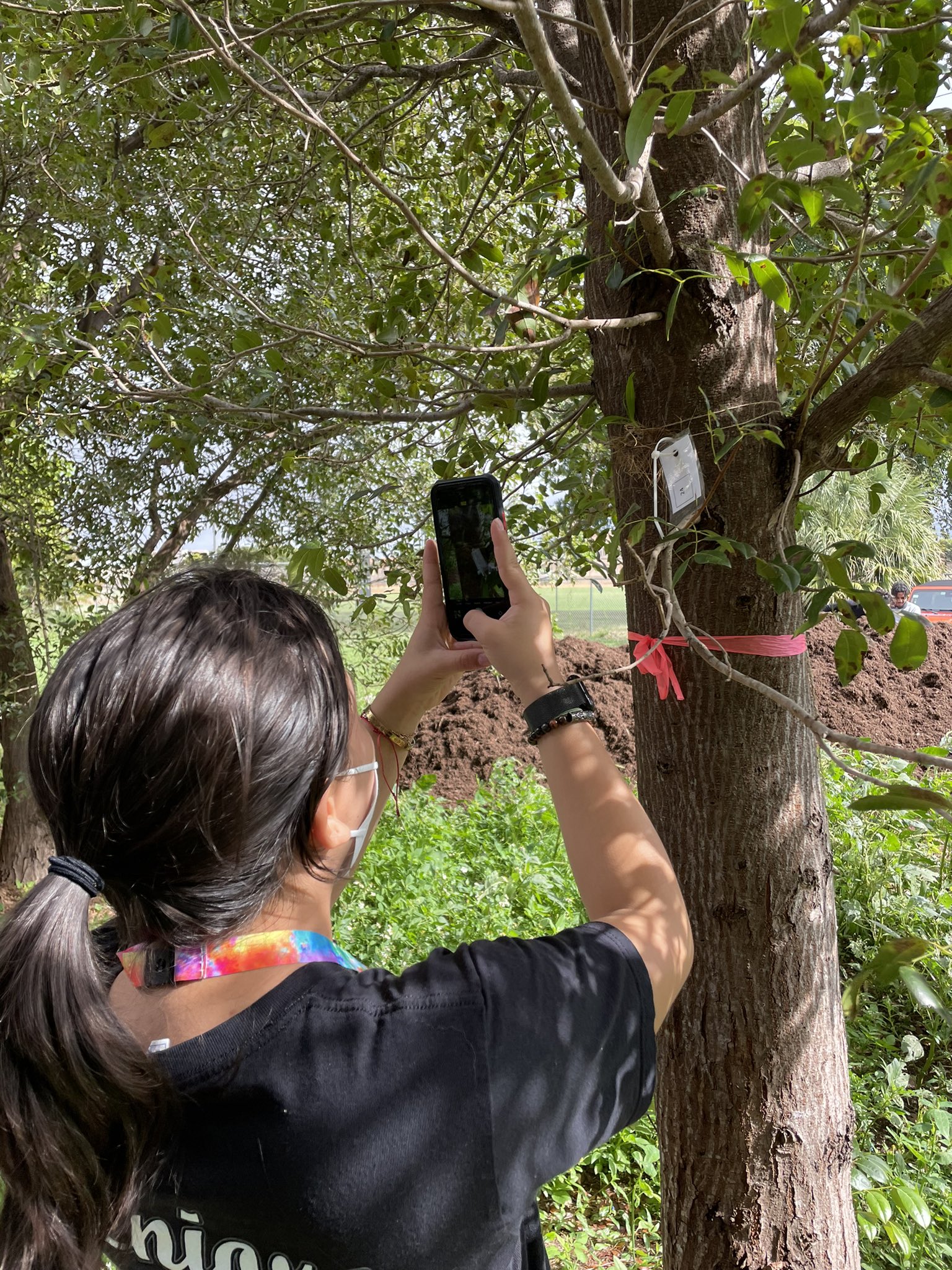
Integrated local and national conservation initiatives:
- Million Orchid Project is an educational initiative working to reintroduce eight species of rare native orchids into the urban landscapes of South Florida. At its core, The Million Orchid Project is a massive science experiment that allows us to make important discoveries about how native orchids grow and reproduce.
- Shade Our Schools is a partnership with researchers at the University of Miami, which engaged more than 4,000 elementary and middle school students to better understand how leaf traits differ between sun and shade leaves, potentially identifying leaf adaptations that may be used by plants to buffer themselves against climate change.
- Connect to Protect Network encourages families, schools, and local businesses to plant pine Rockland gardens to increase the probability of visits from seed dispersers and pollinators. Students have designed promotional posters, board games, and business plans, and they have written stories and created short films to showcase this program and the globally imperiled pine Rockland ecosystem.
- Environmental Debate Tournament again transitioned to the virtual stage in 2021, with more than 100 students — representing 21 high school teams — engaging in debates on pressing environmental issues. Students have an opportunity to research different dimensions of environmental issues at the local, national, and international levels and increase their civic awareness.
- With two nearby national parks, several renowned research universities, and a myriad of environmental organizations and professionals working locally, Miami is a unique center for progress in the environmental field. This year, we hosted Exploring Environmental Careers Day to introduce students to researchers and scientists who are making positive environmental impacts in South Florida.
-
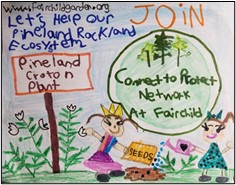
A winning entry from past challenges in partnership with Fairchild’s Connect to Protect Network. Promotional poster by Pinecrest Academy South, courtesy of Fairchild Tropical Botanic Garden. -

A winning entry from past challenges in partnership with Fairchild’s Connect to Protect Network. Promotional poster by La Scuola, courtesy of Fairchild Tropical Botanic Garden. -
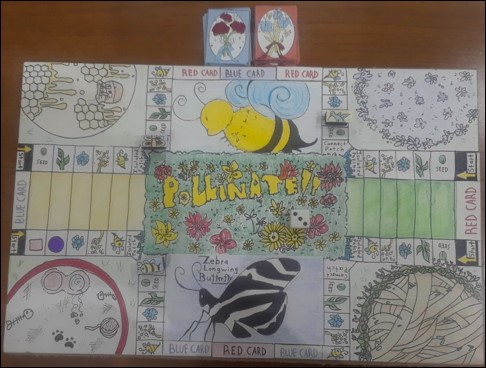
A winning entry from past challenges in partnership with Fairchild’s Connect to Protect Network. Educational board game by Country Club Middle, courtesy of Fairchild Tropical Botanic Garden.
Leveraging our network of teachers and students, the FC is working with researchers from the Donald Danforth Plant Science Center to assess student awareness of the value and importance of plants. The resulting Plant Awareness Disparity Index will provide insights into how well students recognize and appreciate the presence and important ecological role of plants in their environment (Wandersee and Schussler, 1999).
The FC continues to grow in participation and scope, adding new partnerships — including with NASA — as well as new challenges. We have expanded our national reach to more than 430 schools. Amid this flourishing growth, we are happy to report that the program continues to maintain its original intention and spirit, bridging the disconnect between students and their environment while adding a new level of creativity and rigor.
-

Growing Beyond EarthⓇ is a school-based STEM education program in partnership with NASA’s Exploration Research and Technology Programs, where middle and high school students conduct a series of experiments to identify edible plant varieties for long-distance space travel. iMater Academy high school students checking on their radish plants. Photo credit: Monique Salazar. -
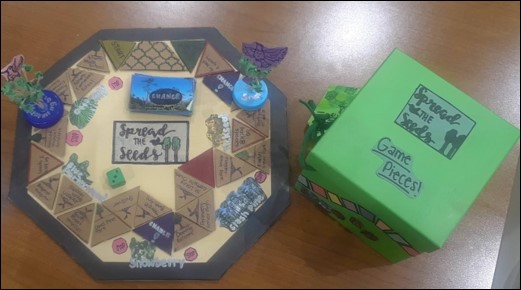
A winning entry from past challenges in partnership with Fairchild’s Connect to Protect Network. Educational board game by Palmetto Middle School, courtesy of Fairchild Tropical Botanic Garden. -
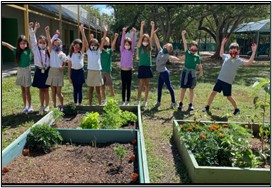
Victory Gardens are seeing a modern resurgence, as the past few years presented the opportunity to reconnect with nature and the food we eat; starting with seeds. More than 3300 elementary students planted a Victory Garden in their school, backyard or patio using seeds collected from their kitchen. Photo credit: Pinecrest Elementary School.
References:
Wandersee, J.H. & Schussler, E.E. (1999). Preventing plant blindness. The American Biology Teacher 61 (2), 82-86.
U.S. Census Bureau QuickFacts: United States. (2020). Retrieved September 03, 2020, from https://www.census.gov/quickfacts/fact/table/US/RHI725219
Welcome to CPC: New Institutional Conservation Partners
The Center for Plant Conservation is pleased to welcome three new plant conservation organizations to our network of Conservation Partners: The Institute for Regional Conservation, Southeastern Grasslands Initiative, and United Plant Savers. Now 71 members strong, the CPC network brings together plant conservationists from across North America and is strengthened by the knowledge and experience that each institution brings. Together, our network makes it possible to Save Plants.
Institute for Regional Conservation
Network Partner | Delray Beach, FL
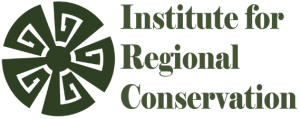
Located in Delray Beach, FL, the Institute for Regional Conservation (IRC) is dedicated to the protection, restoration, and long-term management of biodiversity on a regional basis, and to the prevention of local extinctions of rare plants, animals, and ecosystems. Founded in 1984, IRC promotes an innovative approach to conservation by seeking to protect – and restore – viable populations of all native plant and animal species within key regions by designing conservation strategies powered by rich, geographically distributed data. Their approach adds critical value to traditional conservation strategies focused on charismatic animals or species with small global ranges, and is especially important in regions of the world where rapid fragmentation of habitats has been experienced or is expected.
For more than two decades IRC has focused its field work in Florida and the Caribbean, but the staff are also engaged in high-level dialog on ecological restoration and biodiversity targets more broadly around the world. They work in four domains: developing regional conservation models to advise and direct conservation strategies by diverse actors across broad regions; applied conservation science for researchers and land managers; ecological restoration and management; and engaging with local communities to bring this work to fruition in the context of sustainability. IRC is particularly interested in supporting CPC’s mission by contributing to the prioritization of species in ex situ collections and the integration of rare species into ecological restoration projects and programs.
Southeastern Grasslands Initiative at Austin Peay State University
Participating Institution | Clarksville, TN

The Southeastern Grasslands Initiative (SGI) works to conserve, restore, and promote native grasslands of all types throughout the Southeast region, with a focus on all or part of 24 states in what they call the “biogeographic Southeast.” SGI’s Plant Conservation Program and Conservation Seed Bank aims to protect the genetic integrity of populations of rare and declining grassland species. In these programs, SGI partners with public and private landowners and land managers to determine the most beneficial management and conservation actions for the imperiled species and communities in question. In addition to the work focused on rare species, SGI is also working to increase the availability of local ecotype seeds for the restoration of grassland and grassland-associated habitats, including recovery of imperiled species’ habitats.
In addition to various partnerships, further restoration and preservation initiatives are conducted through SGI’s recently-established Prairie Acquisition Fund, which allowed SGI to acquire a property with a rare wet prairie community in Montgomery County, Tennessee that includes rare and increasingly infrequent grassland species. They hope to use this as a catalyst to continue to acquire unique grassland sites that harbor rare species or rare communities in their region. As its rare plant and seed conservation programs continue to grow, SGI is looking forward to networking within the CPC community and contributing to the CPC Best Practices and research.
-

SGI’s Executive Director Dr. Dwayne Estes demonstrates how to collect bulk seed of common grassland species like Narrowleaf Sunflower (Helianthus angustifolius) as part of a 24-acre prairie restoration in Montgomery County, Tennessee. Photo by Rebecca Johnson. -
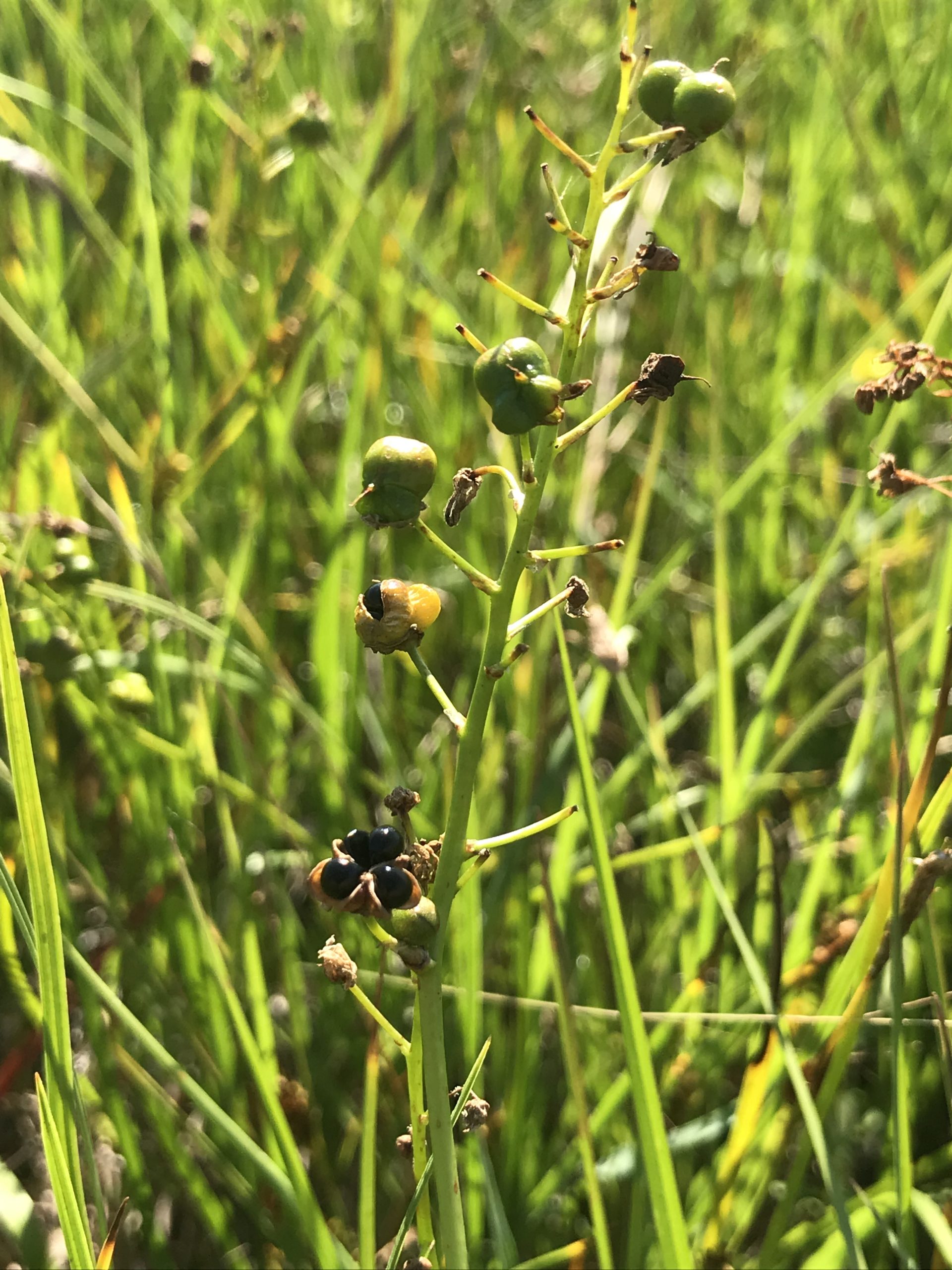
SGI partnered with the Rutherford County (TN) Parks and Recreation to collect seed from Tennessee’s largest population of the state threatened Yellow Sunnybell (Schoenolirion croceum) that is imminently threatened by a road-building project. Photo by Cooper Breeden. -
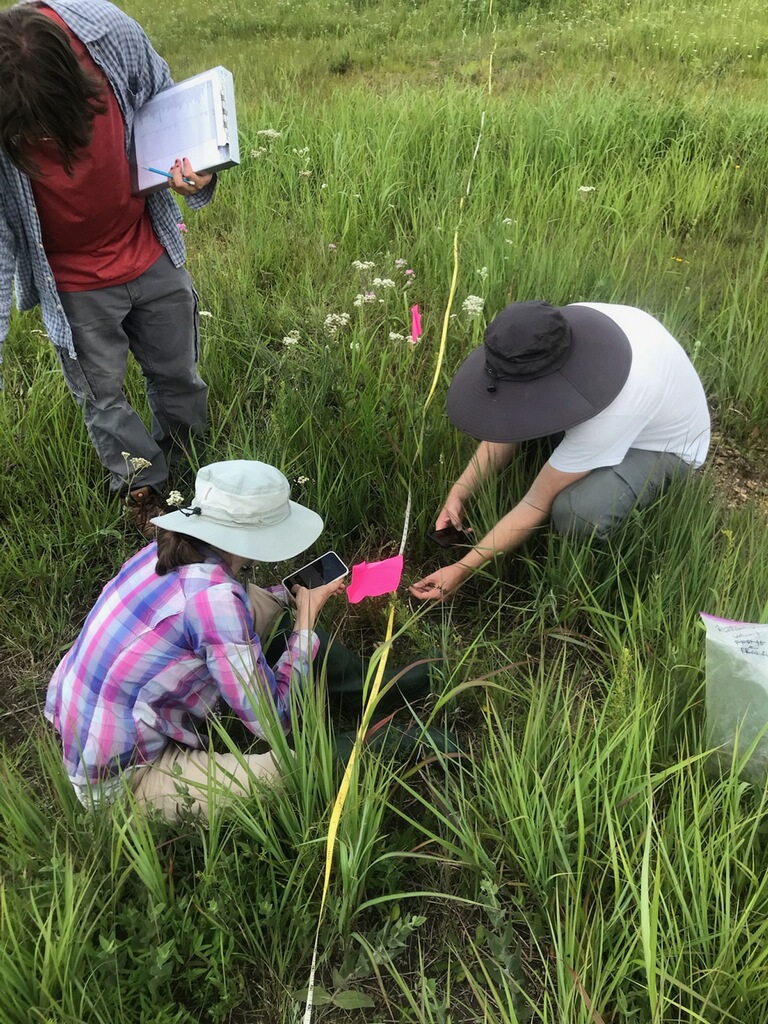
SGI's Plant Conservation Manager Cooper Breeden, Botanist Stevia Morawski, and Plant Conservation Intern Oliver Hutchens collect floristic data at a prairie at Arnold Air Force Base to inform a prairie restoration and reintroduction project at a nearby State Park in Coffee County, Tennessee. Photo by Lillian Fulgham.
United Plant Savers
Collaborating Partner | Rutland, OH
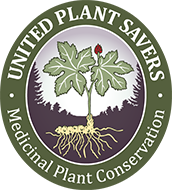
Plants have many wondrous uses, including in traditional herbal remedies and modern medicines. However, demand for wild medicinal plant resources, harvesting for the herbal trade, and habitat destruction have all contributed to decreased populations of many imperiled plants. United Plant Savers’ (UpS) mission is to protect native medicinal plants of the United States and Canada and their native habitat, while ensuring an abundant renewable supply of medicinal plants for generations to come. UpS is a nearly 400-acre botanical sanctuary in Rutland, Ohio, dedicated to the conservation of endangered medicinal plants. It includes the Center for Medicinal Plant Conservation, which serves as a public welcome center, museum, library, and more.
In addition to cultivating and protecting habitat for these plants, UpS has been involved in many USDA grants and works with farmers to grow native, in-demand medicinal plants to take pressure off wild populations. They have also developed a list and ranking system for at-risk medicinal plants and work with IUCN’s medicinal plants specialist group to raise awareness and advocate for their protection. UpS brings a fresh perspective to the CPC network with their focus on endangered medicinal plants, supporting their conservation while building a better public understanding of how plants impact our daily lives.
Alexandra Seglias
Our Conservation Champion, Alexandra Seglias, truly exemplifies an emerging professional Conservation Partner, whose early experiences led her to this career path and her important work to save plants. From agricultural seeds to endangered wetland plants, Alexandra steadily built the skills she uses in her work today. We greatly appreciate her dedication to research on alpine plants, and her collections that contribute to our knowledge of seed longevity – not to mention her optimism and passion!
When did you first fall in love with plants?
Growing up, I was always drawn to animals. In large part, this had to do with the comfort they provided – as a shy child, it was easy for me to talk to and display emotion around them. But thinking back to those younger years, even though I may not have realized it at the time, I also felt drawn to plants. I am typically not great at remembering specific events from my childhood, but I have such vivid memories of playing inside a large shrub in our front yard, the bright yellow flowers of the forsythia lining the fence, and lying under a majestic willow, admiring how the flowing branches swayed in the breeze. However, it wasn’t until college – during field trips in the woods of central Pennsylvania with my enthusiastic botany professor – that I started seeing plants as fascinating and complex organisms. And that is when the love truly blossomed.
What was your career path to Denver Botanic Gardens?
In college I majored in Biology and minored in German. These two seemingly disparate interests led me to an internship at BASF in Germany, where I worked in an agricultural seed lab. Working in a different country was a great experience, but I knew my passion didn’t lie in working for a large corporation. Returning to Pennsylvania, I explored opportunities to work with native plants and got a position as the Plant Protection intern at Morris Arboretum. The internship title more literally meant integrated pest management (an important piece of keeping living collections alive and healthy), but I took it to mean more than just that. Through an independent project on an endangered, diminutive wetland species, I learned about rare plant conservation and what it means to protect plants in other ways. I went on to receive my master’s degree in Plant Biology and Conservation from Northwestern University and Chicago Botanic Garden, where I researched the seed ecology of southwestern forb species. Working and studying at two public gardens solidified my interest in research and plant conservation at botanic gardens. Perhaps by fate, a seed conservation position opened at Denver Botanic Gardens just as I was finishing my thesis. Next month marks five years since I started working at the Gardens.

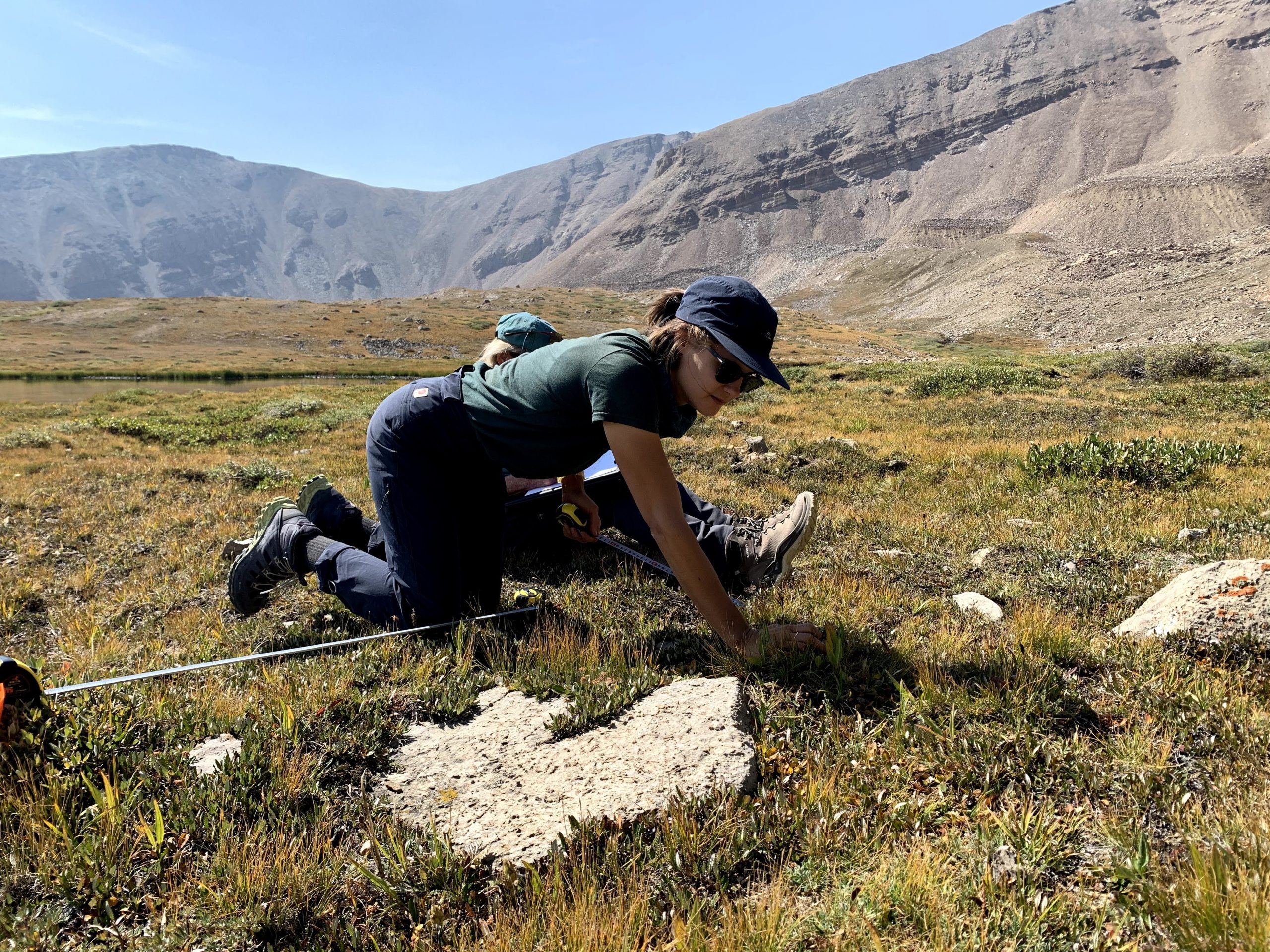
In your experience, what are some of the pressing conservation needs related to Colorado’s rare and native plants?
Wildfires, drought, and warmer temperatures are becoming the norm in Colorado, and the plants already considered rare or threatened will face challenges at a graver scale. Seed banking allows us to have an insurance policy in case of population destruction or extinction. However, we can’t collect seeds and put them into storage haphazardly – we need to have a plan for viability testing, recollection, and storage longevity studies to ensure we have a viable collection for a reintroduction or restoration project. Oil and gas development is also a major threat to the rare and native plants of Colorado. In these cases, in-situ protection measures are primarily needed.
The Colorado Natural Heritage Program has been working on a cool and important project to create species distribution models for Colorado’s Plants of Greatest Conservation Need. These models identify potential occurrences for the species. Organizations and volunteers can then go out and look in these areas to ensure we have accurate population information for species of concern.
What are some of your current projects at Denver Botanic Gardens? What successes or challenges have you encountered in your work?
Last summer I set up an open top chamber warming experiment in the alpine region of Colorado to study the effects of increased temperature on two rare species, Avery peak twinpod (Physaria alpina) and Weber’s saw-wort (Saussurea weberi). Although I encountered some challenges with the setup of the chambers, I am hoping to get things more secured this summer and continue the project with just P. alpina. I’m also planning a germination experiment in the lab to understand how increased temperatures affect germination requirements and growth of a few rare alpine species. Before the pandemic, I conducted an accelerated seed longevity experiment and found that Colorado alpine species may be short-lived in ex situ seed banks. I am particularly interested in how rare alpine species will respond to climate change and conservation measures we can put in place. This research contributes to the North American Botanic Garden Strategy for Alpine Plant Conservation, which was recently published by Denver Botanic Gardens and Betty Ford Alpine Garden.
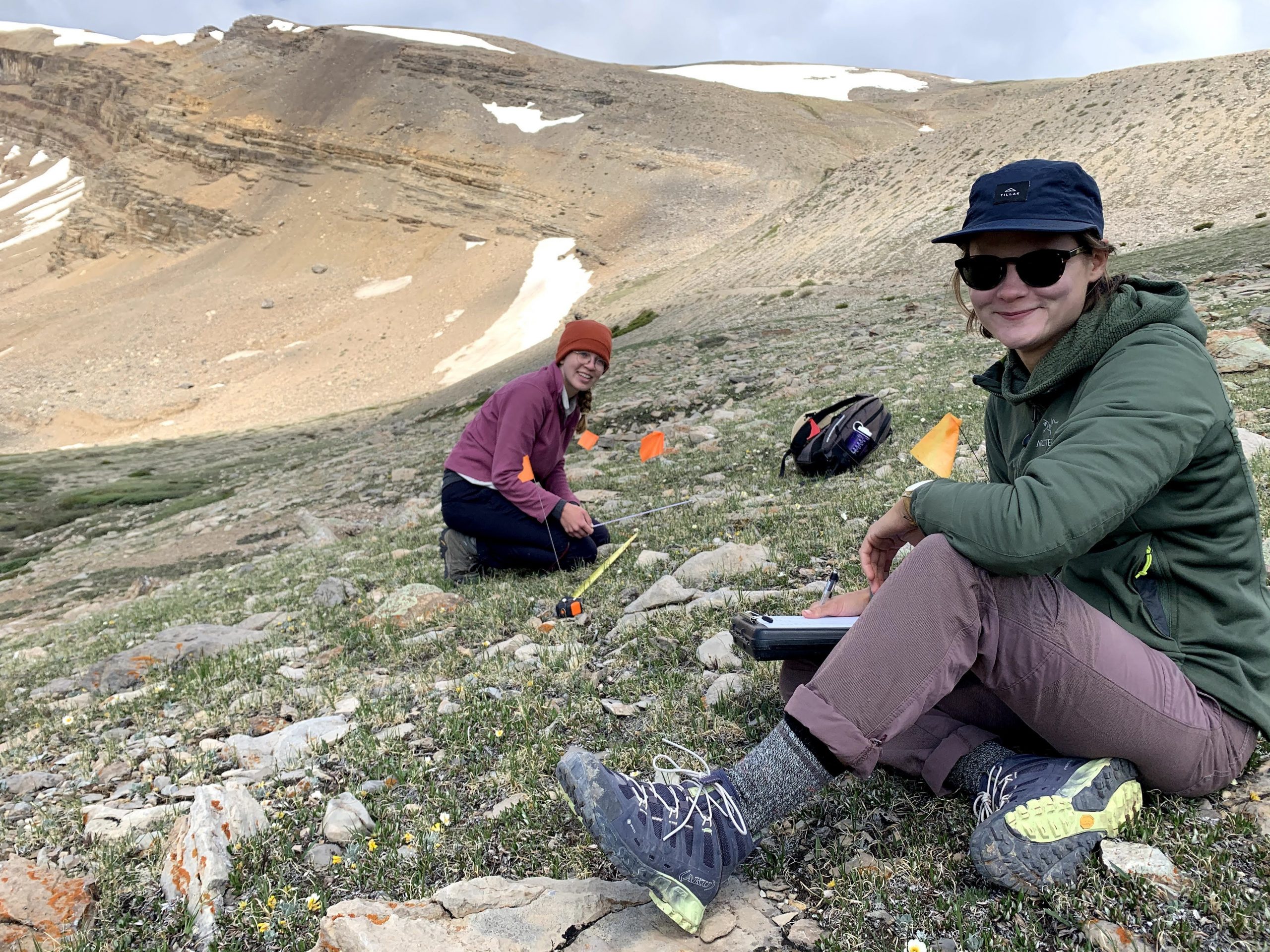
Please share more about how you are contributing to CPC’s IMLS-funded seed longevity study.
First, I identified old seed collections that we have at the Gardens that would work for the project. Once the species/accessions were finalized, I used element occurrence records from the Colorado Natural Heritage Program to locate the historical source populations of the collections. Last summer, I scouted three of the five populations and was able to make seed collections from two of them. Those seeds were sent to NLGRP to be tested against the historical collections. I will target the other three populations this field season. It’s a really cool project and I’m excited to see the results!
What advice do you have for newcomers to the field of plant conservation?
I know that I can sometimes get discouraged about plant conservation when thinking about climate change, political barriers, and public apathy. But it is important to remember that the work of plant conservation is so important, and every person working in the field has something to contribute to help protect our threatened plants. There can be challenges and disappointment, but every day can also offer new and exciting information. One of the most important things is to stay optimistic and passionate!
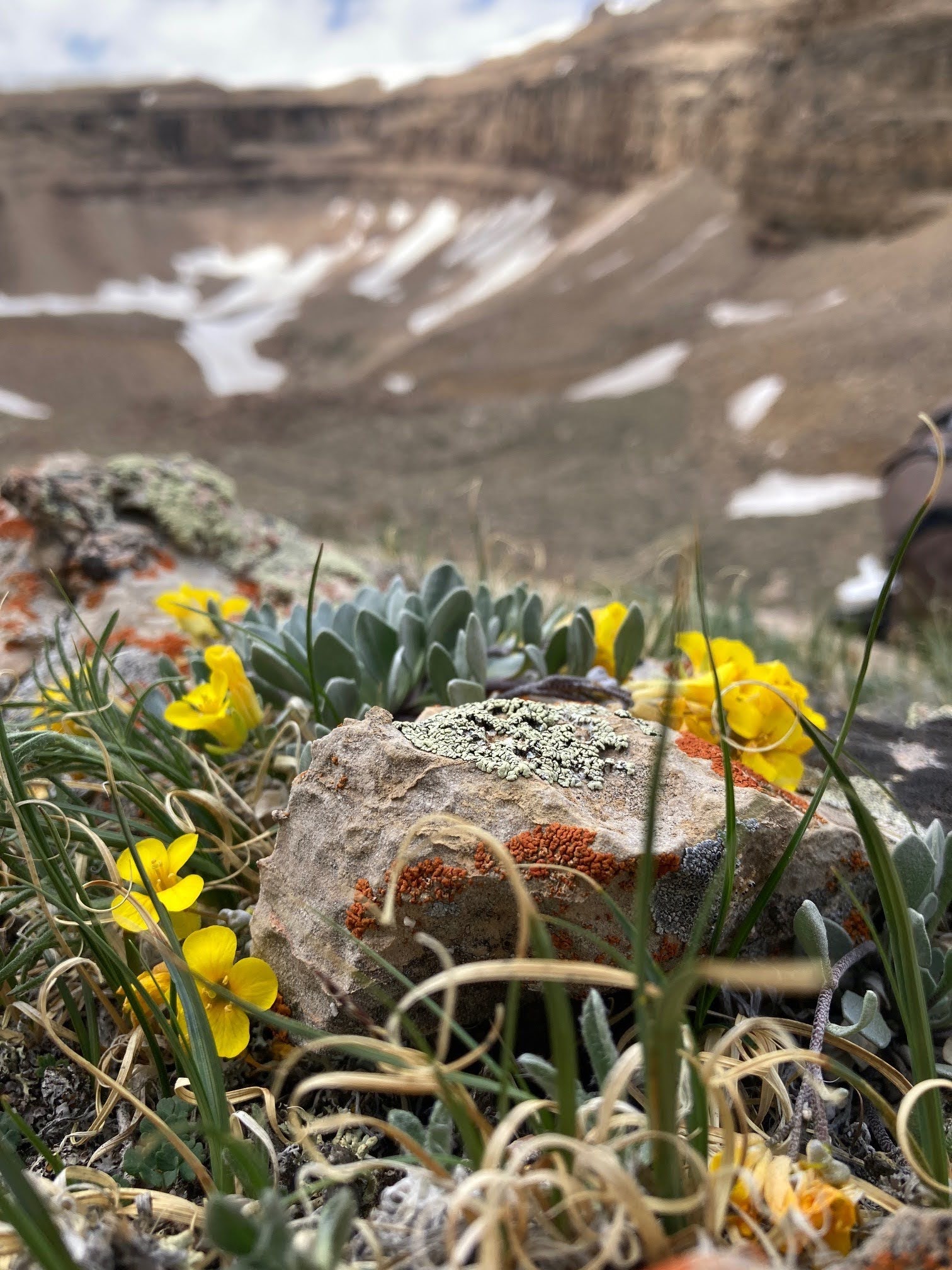
What has it meant to you to be a member of the CPC network? How has CPC supported your work?
My first CPC conference was in 2019 at the Chicago Botanic Garden, where I saw firsthand the closeness among members and the amazing work that folks are doing with rare plants. That was also the year that the Rare Plant Academy was introduced to the network, which I think is such a great resource to connect members of CPC. I’m excited for the annual meeting this May and to see folks in person again!
As one of the first partnering institutions with the CPC, Denver Botanic Gardens has received funding and support for seed collection and conservation for some time. All my work in seed conservation is directly supported by CPC.
What advice would you give to the public who want to learn more about how they can help save imperiled plant species?
I think the first step would be to gain knowledge on the imperiled or threatened plants in your region and spread that knowledge to others. Many institutions have various outreach or volunteer events that may contribute to that knowledge. Find your local organizations that are working with native plants, and sign up for newsletters or follow them on social media to stay up to date on opportunities. I’m perhaps a little biased, but visiting a botanic garden is also a great way to learn more. So many people don’t realize that botanic gardens have research or conservation departments that are working directly with imperiled plant species.

Celebrating World Wildlife Day 2022
World Wildlife Day 2022 will take place March 3, celebrating the theme of “Recovering key species for ecosystem restoration.” The theme was chosen to draw attention to the conservation status of some of the most critically endangered species of wild flora and fauna, and to drive discussions towards imagining and implementing solutions to conserve them. There are over 22,000 endangered and critically endangered species on the IUCN Red List. Continued species loss is a threat to people and our planet. For World Wildlife Day – and every day – let us support the conservation of our most vulnerable plants and animals. Learn more about World Wildlife Day.
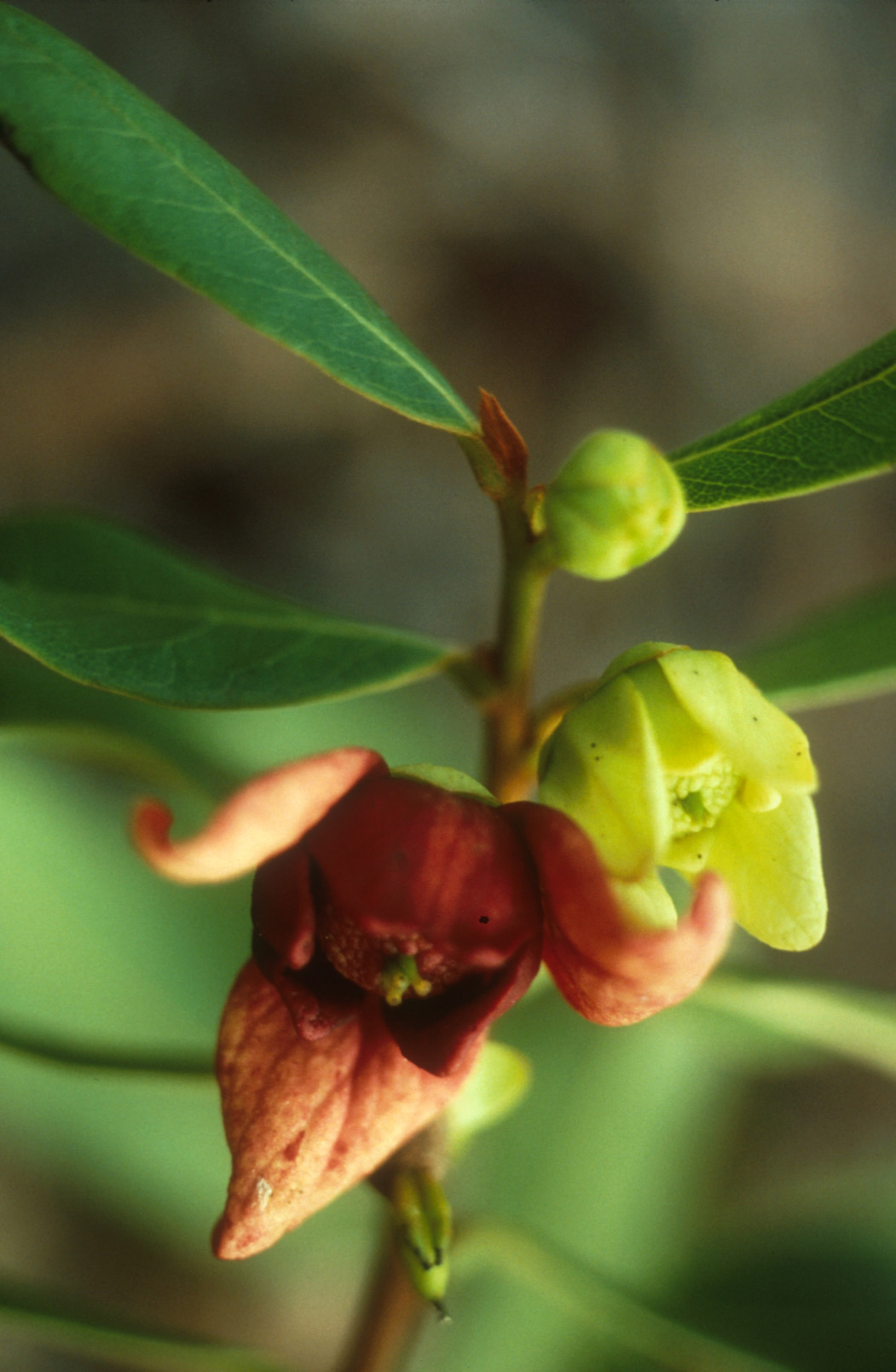
National Collection Spotlight: Four-petal pawpaw
Some plants are naturally rare, which makes them more susceptible to threats. The four-petal pawpaw (Asimina tetramera) may never have been abundant, but habitat loss and fragmentation have winnowed the remaining individuals down to just a few, with additional challenges of questionable reproductive success, narrow endemism, and escalating pressure on land use leading to the species being listed as federally endangered in 1986.
This aromatic shrub features flowers that go from cream to dark maroon as they mature. Found in the wild only in sand pine scrub habitats on the Atlantic Coastal Ridge in southeast Florida, it has also found a home on the grounds of Bok Tower Gardens and in the micropropagation lab of Cincinnati Zoo and Botanical Garden. The oblong greenish-yellow fruits are not at all related to papaya, which is also called pawpaw. Although the ripe fruits smell of bananas, humans do not eat them. However, raccoons, gopher tortoises, and mice are fans and regularly eat the fruit.
Learn more about the fascinating and endangered four-petal pawpaw on its National Collection Plant Profile, and support its conservation with a Plant Sponsorship.
As Seen on CPC’s Rare Plant Academy: Video Library
Explore the Rare Plant Academy video library for the latest lessons in plant conservation research, technologies, and best practices created by our network of Conservation Partners and rare plant experts. Featuring topics that range from seed banking and horticulture to cryopreservation, reintroductions, and more, the Rare Plant Academy video library educates, informs, and inspires both emerging and seasoned plant conservation professionals.
Our newly launched video library webpage makes it easier than ever to browse our growing collection of over 245 videos. Check out featured video content and presentations from professional conferences, or search the entire collection with our new, easy-to-use search function. The best in conservation science and research is at your fingertips!
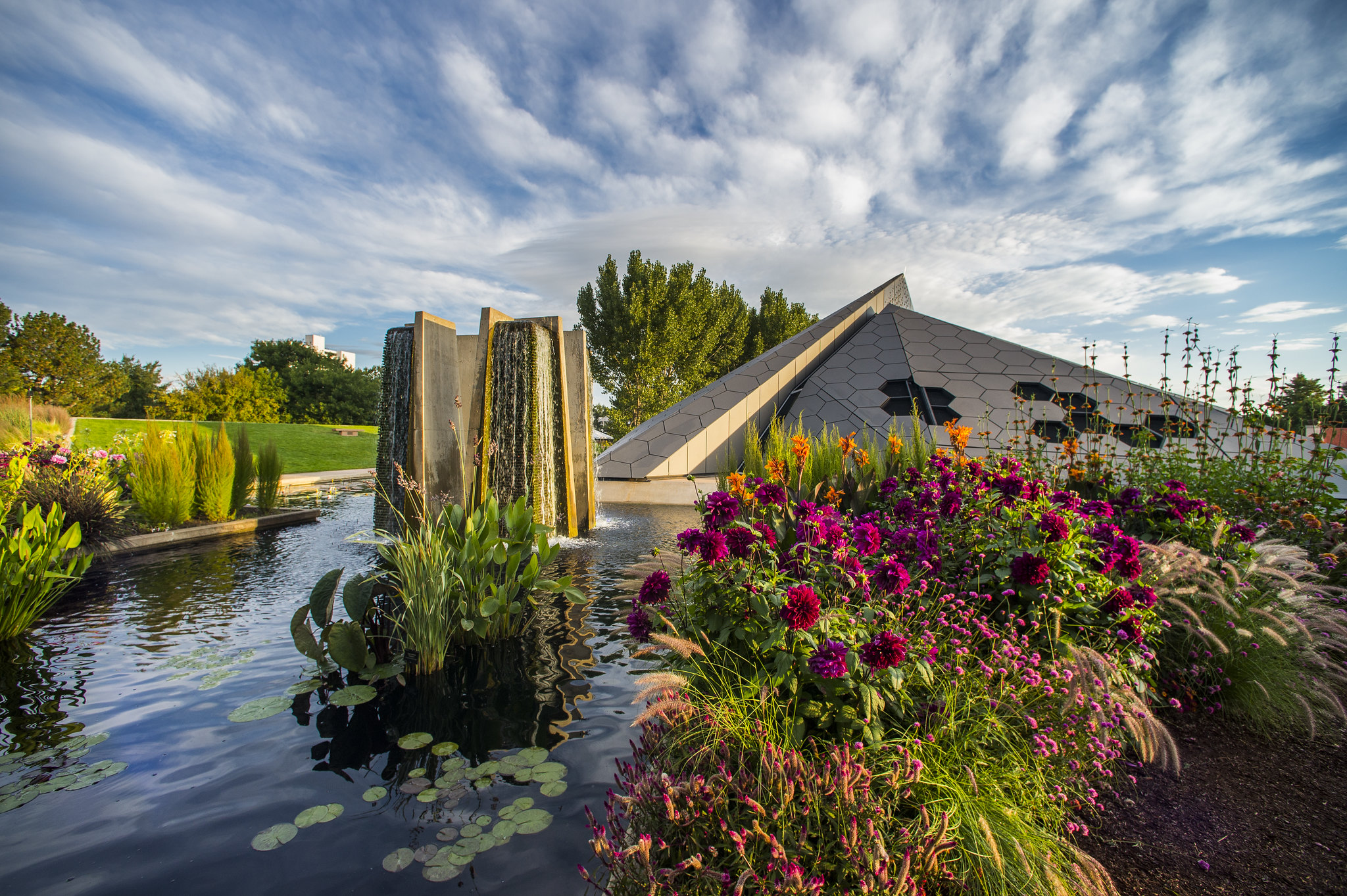
2022 CPC National Meeting
May 4-6, 2022
Registration is now live for the 2022 CPC National Meeting – our first-ever hybrid meeting! The theme of this year’s meeting will be “Celebrating Conservation Milestones,” with both in-person and online presentation sessions including updates from the CPC National Office on network-wide initiatives, plus lightning talks from CPC network partners on plant conservation research, accomplishments, and challenges. In-person sessions will be held at the Denver Botanic Gardens and will be live streamed and recorded for later viewing on the Whova conference platform used by the CPC National Office for our 2020 and 2021 virtual meetings. Virtual attendees will also have access to pre-recorded presentation content and virtual break out sessions.
Early bird registration is available through April 1 – register today to get the discounted rate!
Get Updates
Get the latest news and conservation highlights from the CPC network by signing up for our newsletters.
Sign Up Today!Employment Opportunities
The Emerald Necklace Conservancy in Boston, Ma has open positions for Development Coordinator, Engagement and Policy Manager, Field Operations Manager, and Major Gifts Manager.
Please view all available positions and apply here.
CARSON CITY, NEVADA, US, 89701
Department: DEPARTMENT OF CONSERVATION & NATURAL RESOURCES
Division: DCNR – NATURAL HERITAGE
Business Unit: HR-NEVADA NATURAL HERITAGE
Work Type: PERMANENT
*Pay Grade: GRADE 37
Salary Range: $55,958.40 – $83,394.72
Full time/Part time: Full Time
Recruiter: KENNETH R SCHULZ
Phone: 775 684-0147
Email: krschulz@admin.nv.gov
Position Description
Biologists conduct fisheries, wildlife, and/or habitat management projects and research studies including data collection, analysis, and interpretation; develop and implement project proposals and work plans; prepare recommendations; and participate in public relations activities. Incumbents function as first-line supervisors who train, supervise and evaluate the performance of assigned staff; assign and review work; and initiate disciplinary action.
This position serves as Biologist IV, Supervisory Botanist, for the Nevada Division of Natural Heritage. Principal duties include documenting, monitoring, and conserving Nevada’s rare plant diversity. Position tasks include statewide rare plant data collection and management, environmental review, advising the State Forester/Firewarden on rare plant-related topics, grant proposal development and grant management, communicating with and responding to inquiries from the public, working cooperatively with numerous governmental agencies, non-governmental organizations, and Tribes on a variety of botany-related topics, and supervisory and administrative tasks.
For more information and to apply click here.
Position: Biologist 4 (Supervisory Botanist)
Deadline: 3/11/2022
Location: Carson City, NV
Status: Full-time, Permanent
Compensation: $55,958.40 – $83,394.72
Overview:
This position serves as Biologist IV, Supervisory Botanist, for the Nevada Division of Natural Heritage. Principal duties include documenting, monitoring, and conserving Nevada’s rare plant diversity. Position tasks include statewide rare plant data collection and management, environmental review, advising the State Forester/Firewarden on rare plant-related topics, grant proposal development and grant management, communicating with and responding to inquiries from the public, working cooperatively with numerous governmental agencies, non-governmental organizations, and Tribes on a variety of botany-related topics, and supervisory and administrative tasks.
*For more information and to apply: https://careers.nv.gov/job/CARSON-CITY-BIOLOGIST-4%2C-Supervisory-Botanist-NEVA-89701/843345000/

Seeding the Future: Restoring Native Plant Communities | Speaker: Peggy Olwell, BLM Plant Conservation and Restoration Program
Interior’s Office of Policy Analysis Seminar
Seeding the Future: Restoring Native Plant Communities
Speaker: Peggy Olwell, Program Lead, BLM Plant Conservation and Restoration Program
Topic: Seeding the Future: Restoring Native Plant Communities
Date: March 14, 2022
Time: 12:15-1:15 pm (Eastern) Webcast Only: Microsoft Teams Live Event (You can also use this link to access the recorded seminar after the event.)
Closed captioning (CC) is available. Click the CC button on the Teams viewer.
Learn how the Bureau of Land Management (BLM) and other members of the Plant Conservation Alliance (PCA) are working to restore healthy, biodiverse, and resilient ecosystems. The PCA is a public-private coalition of about 15 Federal agencies and more than 400 non-federal cooperators. In 2015, the PCA developed the National Seed Strategy for Rehabilitation and Restoration to increase the availability of locally adapted native seed for restoration. PCA members and partners have made significant progress implementing the National Seed Strategy during its first five years, but our work has only begun. To truly “seed” the future, we need to develop national policy on native seed development and use, build botanical and ecological expertise throughout the land managing agencies, and develop a National Seed and Restoration Center for cross-institutional coordination and implementation.
To view the Live Event, please click on the link above. Join 5-10 minutes early to avoid technical difficulties.
To view the recorded event, click on the link above (following the event).
The public is welcome to join the Microsoft Live (or recorded) Teams Event.
Interior Department employees seeking training credits: This seminar meets one hour of Executive Education training. To document your attendance, preregister via DOI Talent. Be sure to return to DOI Talent to mark yourself complete following the seminar. For additional information about this event, please contact malka_pattison@ios.doi
Donate to CPC
Thank you for helping us save plant species facing extinction by making your gift to CPC through our secure donation portal!
Donate Today
